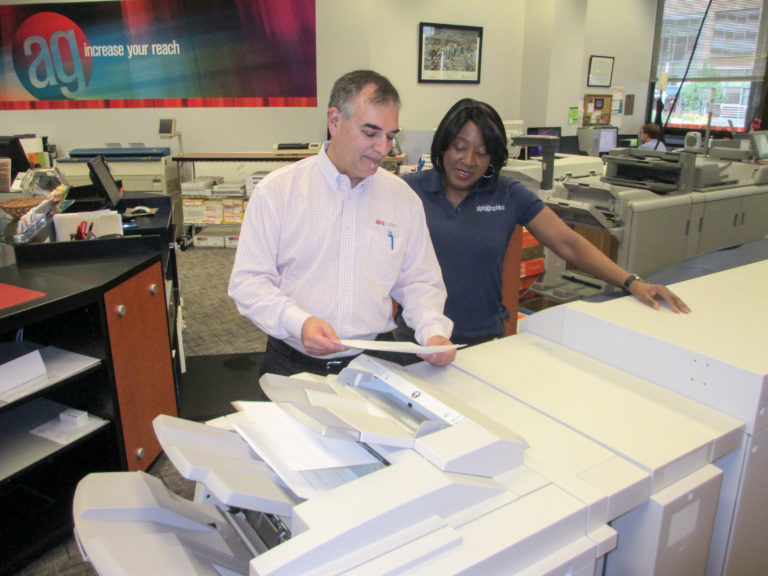In a recent assignment with a school district, we were asked to reduce the turnaround times from five weeks to three weeks. For the purposes of this article, we will refer to this as reducing the service level agreements (SLAs). Ironically this was a return visit to the same facility with the exact same request, which made us wonder if something had gone wrong after the 2014 assignment. A recommendation from the first visit was an additional staff member and a web-to-print solution, which did reduce the average SLA from five weeks to three weeks.
Working to reduce SLAs is complicated for two reasons:
- SLAs change during peaks and valleys in demand. In this case, the average SLA was five weeks but during slow times it went down to four weeks and in peak times increased to six weeks.
- There are multiple solutions to consider. For this situation, we outlined four possible solutions based on staffing and equipment.
We discovered two root causes for the increasing turnaround times: the volumes were increasing and there was reduction in staffing when they thought more teaching materials would shift to electronic alternatives after electronic tablets where purchased. The reduction in staff had a more profound effect because the floor plan or the physical plant layout was designed for three staff with equipment placed in each of their working areas. The staff member who was terminated manned two printing devices and the finishing equipment and the distance was too far for the remaining staff to walk to use those other printers.
In the table below is the current state and four possible future states. The plus signs are a measure of time. Among the options considered are to continue with existing staff, hire additional staff (1 FTE), move equipment to better suit staff (optimize layout), add second or split shifts, hire temporary staff (on-call staffing), and upgrade equipment.
| Option | Mean SLA | Best SLA | Worst SLA |
| Current State: Continue “As is” | +++++ | ++++ | ++++++ |
| #1: Keep existing equipment and staff, optimize layout, use on call staff, move to two shifts during peaks, offer overtime | ++++ | +++ | +++++ |
| #2: Keep existing equipment, hire one FTE, use on call staff, offer overtime, move to two shifts during peaks | ++++ | ++ | ++++ |
| #3: Upgrade to four much faster machines (150-180 ppm), maintain staff, optimize layout, offer overtime and use on call staff | +++ | ++ | ++++ |
| #4: Upgrade to five slightly faster machines (70- 90 ppm) hire one FTE, optimize layout, eliminate overtime | ++ | + | +++ |
For each option, a cost benefit ratio was created. With the steady increasing page demand of approximately 20% year, they choose option four.



